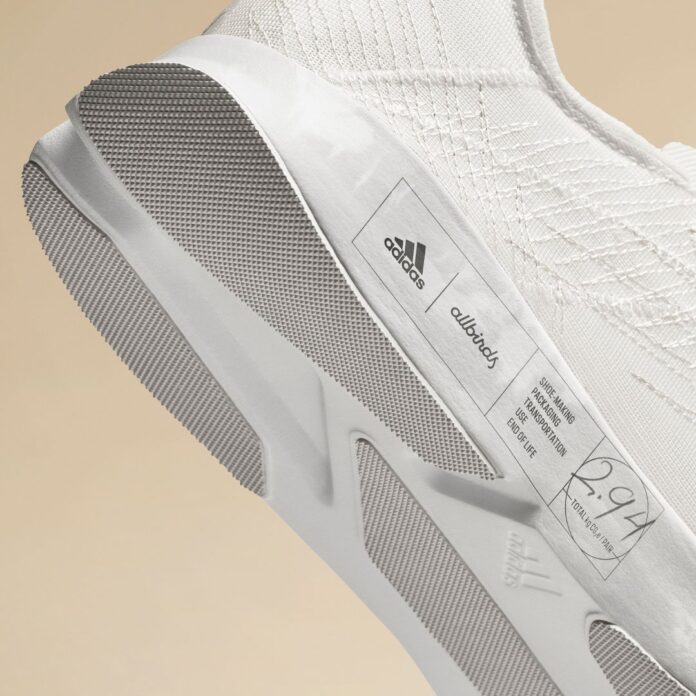When it comes to sports, running’s carbon footprint is relatively small. Going for a run doesn’t require ripping up grasslands to build a court or burning gasoline to drive to a faraway lake. You don’t need to buy a lot of equipment, either. You can even run in the gym shorts you owned in the seventh grade (although most of us don’t).
But running still leaves a mark on the Earth. Manufacturing a pair of running shoes can be an environmentally taxing enterprise. In 2013, a team led by Randolph Kirchain, the principal research scientist at MIT’s Materials Systems Laboratory, and research scientist Elsa Olivetti discovered that making one pair of running shoes releases about 30 pounds of carbon dioxide into the atmosphere. High-performance sneakers in particular have an energy-intensive manufacturing process, with steps ranging from cutting and sewing tiny pieces of fabric to generating, molding, and heating foam.
In 2016, the shoe company Allbirds changed the manufacturing landscape with the introduction of its signature sneaker. By using eco-friendly materials and taking small steps to reduce the environmental impact of shipping, like cutting down on packaging, the company developed a process for making its woolly runners that generates about a third less carbon emissions than the industry-standard process for making a performance sneaker.
Today, the company announced it has teamed up with the athletic apparel giant Adidas to try to leave that previous achievement in the dust. The partnership has birthed a new shoe, and the collaboration is the latest entry in Adidas’ Futurecraft line of technologically advanced apparel. The new Futurecraft.Footprint is a high-performance running shoe with a far smaller environmental impact; by the companies’ estimation, its manufacturing process emits a remarkably low 6.5 pounds of carbon dioxide.
The new shoes will be available in the fall. Before their release, a limited number of pairs will be raffled off to members of the Adidas Creators Club, a program where members get early access to new designs.
Photograph: AllbirdsThere are plenty of points along the manufacturing process where a shoemaker can reduce its carbon emissions—materials, manufacturing, transportation, and end of life, among others. Allbirds and Adidas reevaluated the entire process.
The first, and most obvious, point of revision was in the materials used for the shoes. Allbirds has a history of seeking out materials with a lower carbon footprint than the petrochemical foams and fibers commonly used to make athletic footwear. The company that is known for using materials like merino wool and castor bean oil in its sneakers helped Adidas re-create its featherweight Lightstrike midsole using Allbirds’ SweetFoam instead of thermoplastic urethane. The Futurecraft.Footprint was built around this platform.
The new shoe’s upper is a mesh made from 70 percent recycled polyester and 30 percent Tencel, a cellulose fiber material made from wood pulp that also makes an appearance in Allbirds’ Tree Runners. And like many of the other products in Adidas’ Terrex and Futurecraft lines, the new shoe only comes in pure white, because dyeing is also an energy-intensive process.
The companies sent me a pair of the new running shoes to try. I weighed one size-7.5 women’s shoe at 4.6 ounces, which is incredibly light; for comparison, my current favorite Hoka Clifton 7s weighs 8.1 ounces per shoe. Reducing weight serves two purposes. First, it increases the performance factor: Runners can save energy if they don’t have to carry a big, poofy, heavy shoe on each foot. Second, it lowers the financial and environmental costs of manufacturing and shipping.
“A huge part of the process was reducing weight,” says Sam Handy, Adidas’ vice president of design and running. “Weight has an enormous impact, through shipping, materials, and carbon input in the production.”
In addition to swapping out the materials, Adidas and Allbirds also changed the shoe’s design to support the foot without adding extra material. For example, rather than stitching additional panels to reinforce the shoe’s upper, the companies simply used stitching that winds around the upper, reinforcing the toe, arch, and heel.
“Where another running shoe might have internal running support in the heel, we’ve been able to do it with the directionality of the embroidery,” says Jad Finck, Allbirds’ vice president of innovation and sustainability. “You’re eliminating an extra piece but finding another way to build it into the fabric of the shoe.”
And of course, rather than Allbirds’ casual slippers or everyday shoes, the Futurecraft.Footprint has been performance-tested to Adidas’ standards with Adidas’ existing stable of athletes. The first prototypes are rolling out now, but Adidas is planning to distribute them to its athletes as a recovery or training shoe in advance of the Summer Olympics in Tokyo.
As for when us normal folks will get them, Adidas will first raffle off a limited number of pairs to members of its Creators Club. The shoes will go on sale to the public this fall. Company reps say we can expect them to cost about as much as a regular Allbirds or Adidas running shoe, but beyond that no exact pricing details have been released.
Since Adidas and Allbirds were able to send me a prototype pair for testing, I took the Futurecraft.Footprint on a few 3- to 5-mile runs over several days.
The prototypes are very attractive, very light, and surprisingly true to size. Adidas’ shoes usually run one size larger than pretty much every other running shoe I’ve tried; if you normally size up to account for swelling, you don’t have to do so here. The directional white-on-white stitching is unobtrusive on the whisper-thin upper, and the tongue has perforations for better ventilation on hot days. I wasn’t able to test them long-term, but I’d be very interested to see if reinforced stitching around the toe and heel holds up over time.
Unfortunately, they’re not the right fit for me. The arch supports on the Lightstrike midsole just don’t fit my arches comfortably or correctly. But the Lightstrike midsole is part of many of Adidas’ most popular performance shoe lines, so if you love the Adizero running shoes, you’ll probably love these.
The most interesting aspect of the Futurecraft.Footprint is how quickly Adidas has taken on exploring different projects to address sustainability and climate change. Some might be more successful than others, but to go from the drawing board to a finished shoe took Adidas and Allbirds about 12 months. Even the mark denoting the weight—“2.94 kg” written” on the side of the shoe—is scrawled by hand, suggesting that even this iteration is just one step in the process.
The fact that just a handful of athletic apparel companies—even two big names like these—are putting forth projects to reduce carbon emissions means it’s all mere window dressing on a much bigger problem. But the sheer speed of this project’s completion suggests that we can change the way we manufacture consumer goods much more quickly than we think.
- 📩 The latest on tech, science, and more: Get our newsletters!
- They told their therapists everything. Hackers leaked it all
- The statistical secrets of Covid-19 vaccines
- To make chips more powerful, IBM is growing them taller
- Don’t underestimate the challenge of building a PC
- NFTs and AI are unsettling the very concept of history
- 👁️ Explore AI like never before with our new database
- 🎮 WIRED Games: Get the latest tips, reviews, and more
- 💻 Upgrade your work game with our Gear team’s favorite laptops, keyboards, typing alternatives, and noise-canceling headphones








